- Home
- Mack Maloney
UFOs in Wartime: What They Didn't Want You To Know Page 2
UFOs in Wartime: What They Didn't Want You To Know Read online
Page 2
Though he went on to shoot down a total of eighty Allied planes, von Richthofen would be dead within a year. Waitzrik survived the Great War and the next one, and became an airline pilot.
About his encounter with the strange aerial craft, he confided years later: “Except for my wife and grandkids, I never told a soul.”
* * *
Captain Waitzrik’s famous companion was not the first combat pilot to shoot at a strange flying object during World War I. That had happened more than a year before. On January 31, 1916, British Royal Naval Air Service sub-lieutenant J. E. Morgan climbed into his BE2c fighter and took off from his base outside London. It was nighttime and Morgan was on the lookout for German zeppelins.
While the British would one day become astute at shooting down the enormous armed blimps by equipping their airplanes’ machine guns with incendiary shells, that technological leap was still a year away. This winter night, Morgan was on a recon mission, a sort of crude early warning system, hoping to spot any German airships heading for London. What he found above the British capital, though, was something else entirely.
First documented in 1925, in a book by Captain Joseph Morris entitled German Air Raids on Great Britain, 1914–1918, Morgan had ascended about a mile above London when he saw a bizarre object flying slightly higher than him. He described it as having a row of lighted windows and looking something like a railway carriage with the blinds drawn.
Despite its weird appearance, Morgan was convinced he’d stumbled upon a German blimp about to attack London.
German zeppelins had bombed England for the first time in January 1915, helping to ignite history’s first aerial conflict. But the timing for the world’s first air raid had been unusual. As a rule, the Germans preferred flying their zeppelins when the weather was fairly warm, between March and September, because in winter months their blimp crews faced freezing and sometimes deadly temperatures flying high above the British Isles. So, for Morgan to encounter an authentic zeppelin over London in the middle of winter would have been a little peculiar.
The mysterious object was about 100 feet above him when Morgan first spotted it. Again, still thinking it was a German blimp, he drew the only weapon he had — his service pistol — and began firing at it.
Suddenly the object shot straight up at tremendous speed and disappeared into the night. The object rose so quickly, in fact, that Morgan thought his own plane was actually losing altitude. This disorientation forced him to crash-land in a marsh.
Morgan was not the only person to spot the weird flying object that night. Fifteen minutes after his encounter, another British pilot reported seeing something unusual caught in searchlights panning the skies above London. Others on the ground later said they’d seen the strange object as well.
Whatever happened, Sub-Lieutenant J. E. Morgan holds a particular distinction in UFO lore: He is considered the first person to shoot at an unidentified flying object from the air.
If it was a UFO, that is.
* * *
To understand what Sub-Lieutenant Morgan may or may not have seen over London that night, we have to go back seven years, to 1909.
In the spring of that year, people all over the British Isles, particularly along England’s east coast, began seeing strange things in the sky. So many of these mysterious flying objects were reported, it became known as the Great Airship Scare of 1909. The aerial intruders, whatever they were, were dubbed “scareships.”
In a story related by many, but researched with particular levelheadedness by journalist and UFO writer David Clarke (see drdavidclarke.co.uk), it all started in the early morning on March 23 when a policeman on duty in Peterborough, a city located in East Anglia, thought he’d heard the sound of a car approaching in the dark. Police Constable Kettle soon realized, though, that the noise was coming from overhead. When he looked up, he saw an object about 1,000 feet above him moving at tremendous speed. The object was oblong and narrow, had a powerful light attached to it and was accompanied by a whirring sound. It was so large, the policeman said, it blotted out the stars. He watched in astonishment as it quickly vanished to the northwest.
Kettle told his fantastic story to the local Peterborough newspaper, and it was later picked up by the Daily Mail of London. But even though the newspaper claimed another Peterborough policeman had verified the constable’s sighting, the incident was soon forgotten.
Only temporarily, though, because about six weeks later, there was a veritable deluge of airship sightings over East Anglia. Suddenly people were seeing Kettle’s mysterious craft everywhere. So many reports came in, the British press decided to pursue the story aggressively. A media frenzy followed.
The London Evening News and the Daily Express in particular led the charge. They dispatched reporters to East Anglia where more witnesses to Kettle’s original scareship sighting were found. From workers at a nearby train station, to farmers in Norfolk, to a crowd in Ipswich, they all claimed to have seen the same strange flying object the policeman saw back in March. All of them described the object as large and cigar shaped with powerful lights attached; all of them said it was able to fly against the wind and move at extremely high speed.
With each subsequent newspaper story, more reports poured in from other East Anglia towns such as Ely, Wis-bech and Saxmundham and then places like Wingland, Woolpit and Orton. As the craze grew, so did the number of sightings. Suddenly it seemed like scareships were being seen all over England, including London, fueling belief there was more than just one. At its height, scareships were being reported from as far away as Belfast, Northern Ireland.
Theories abounded on what they might be. Some speculated the mysterious craft were the work of an eccentric English inventor, or that they were small gas balloons carrying lanterns sent aloft by pranksters just to rile people up. Or maybe they were even secret weapons belonging to the British military.
But most people believed the scareships were actually German zeppelins sent over England as spy ships.
Once more, the time frame has to be taken into account. Due to a series of secret treaties and a hunger for score settling over most of Europe, it was a foregone conclusion in 1909 that England and Germany would soon be at war. And because the British military was not prepared for such a conflict, some government officials actually wanted the scareships to be of German origin, so they’d have an excuse to beef up England’s armed forces.
The zeppelin theory was flawed, though. While the natural explanation for what Constable Kettle saw that night would be a German blimp, as Germany was the world’s leader in dirigible technology at the time, very few military-adapted zeppelins existed in 1909, never mind ones that could successfully navigate a 700-mile round-trip to and from the British Isles in the dead of night.
Then there was the speed factor. Even five years later, once war had broken out, a state-of-the-art military zeppelin could only manage 50 miles an hour. Such a speed does not jibe with Constable Kettle’s account, or the accounts of hundreds of others, who saw the mysterious airships moving through the British skies with incredible quickness.
The London Weekly Dispatch did an experiment. One night, a scareship was reported over the East Anglia town of Stamford; twenty minutes later it was seen over the coastal town of Southend, nearly 70 miles away. By matching up the two reports, the newspaper determined the scareship would’ve had to have been traveling in excess of 200 miles per hour to make such a quick journey — much faster than the fastest airplanes of the day and many more times the speed of Germany’s best zeppelin ever. Even modern blimps don’t move much faster than 60 miles per hour, and that’s under ideal conditions.
Many eyewitnesses also reported that the scareships carried bright searchlights. Any searchlight that could be described as “powerful” would have to be heavy and would also need some kind of power source. These would be weighty items to carry aboard a lighter-than-air ship.
Some experts at the time claimed that even if the Germans did have a
blimp in 1909 capable of flying so far from home, the winds blowing over the English Channel throughout May 1909 were southwesterly, making a crossing by a zeppelin flying from mainland Europe suicidal at best.
Even more mysterious, there had been a similar, equally unexplained airship scare in the United States during the years of 1896–97. If a zeppelin would have a difficult time crossing the relatively narrow English Channel in 1909, how could one have possibly flown across the Atlantic twelve years earlier?
The London Weekly Dispatch also concluded that if the scareships were somehow of German manufacture and were sent to do reconnaissance in anticipation of a coming invasion and war, why would they do so at night with only the aid of a couple of bright lights? More importantly, why would they operate in such a way that so many people saw them? Hundreds of people spotted scareships in May 1909. Why weren’t any attempts made to conceal their activities?
Hardly good spy work.
* * *
Another odd thing happened as scareship-mania swept 1909 England. This had to do with Constable Kettle’s employers, the Peterborough Police.
Asked by a reporter what Kettle really saw, a Peterborough Police spokesman replied it was nothing more than a kite with a Chinese lantern attached to it. When asked what caused the “engine” sound Kettle heard when he spotted the object, the spokesperson claimed the noise was coming from a motor running all night at a local bakery. In other words, when confronted with one of their own claiming to see something strange in the sky, Kettle’s bosses tried to discredit him by offering somewhat ludicrous explanations.
This is interesting because when the flying saucer craze hit the United States some forty years later, the U.S. military and the CIA also started a campaign to discredit anyone who reported seeing UFOs. But even more sinister are the stories that starting in the late 1940s, U.S. government agents actually tried to intimidate UFO witnesses into keeping quiet. These shadowy agents became known as the “MIB,” the infamous men in black. How strange then that Great Britain’s Airship Scare of 1909 had its own version of an MIB incident.
This episode began with a sighting on May 7 at a place called Clacton-on-Sea in Essex. That night, a local resident spotted a long, torpedo-shaped object flying high above his house. The aircraft was moving very fast and bore two bright lights. He watched it until it disappeared into the night.
The next morning the man found a curious object in the grass on the cliff near his residence. By his description, it looked like a soccer ball with a long steel bar running through it.
Word of the peculiar discovery got around quickly. Though the police and members of the local coast guard examined the object, they had no idea what it was. They asked the man to lock it away until someone from the British military was able to study it.
About two weeks later, the British military took possession of the object and, later on, claimed it was a sea buoy used for naval target practice. Just how a “sea buoy” wound up atop the cliffs of Clacton is still a mystery.
Before the military took the object, though, the resident who originally found the “buoy” reported that two odd-looking men had materialized near his house and were seen combing the cliff nearby, as if looking for something.
The mystery men then searched the homeowner’s barn and the area where he had kept the “buoy” before the military retrieved it. When the owner’s house servant left to go out, the men confronted her, speaking to her in a strange language. She fled back into the house and the strange men disappeared.
This was the first of many reports of odd, foreign-looking individuals seen lurking in the area of scareship sightings. And while some suggested these strangers could have been German agents, possibly ones just as baffled by the scareships as the British, no one ever determined who they were.
* * *
So what were the scareships?
Just like the flying objects seen over America in 1896–97, and subsequent airship scares over Australia, Russia, Poland, Austria and Belgium in 1913, the sightings have never been explained.
Based on eyewitness accounts of speed, maneuvering and flight capability, though, what people were seeing over England in 1909 seems clearly beyond the technology of the time.
The last word on the scareships should go to the one person who might have held the key to the mystery. During the 1909 scare, a British newspaperman managed to ask Count Ferdinand Graf von Zeppelin himself what he thought the scareships were.
His response was: “I don’t believe in ghosts.”
What Happened at Mons?
For the British, tales of strange things in the sky did not end when World War I finally started in 1914.
Scareship sightings continued over England even as real zeppelins began bombing British cities. Accounts of airships doing bizarre things above the trenches of France were also reported even while the fighting raged below.
But probably the oddest aerial phenomena story to come out of that great conflict, at least on the British side, was that of the “Angels of Mons.”
It begins on August 22, 1914, at the very start of the war. The German army was moving west through Belgium, seeking to overwhelm France. Standing in its way was the British Expeditionary Force.
The looming battle was not evenly matched. Though better trained and equipped, the British force numbered only about 80,000 men, while the Germans had fielded an army of more than 160,000.
The two sides collided near Mons, a village in western Belgium. It was the first clash between England and Germany in what would be a long and bloody war. After two days of brutal fighting, though, the outnumbered British managed to stop the German advance. The Germans had taken so many casualties, in fact, that they declared a temporary cease-fire, allowing the British force to withdraw.
News of this British “victory” sentreverberations throughout England. Recruitment soared and patriotic fever swept the nation. But with it came a strange account that the British army had had otherworldly assistance in “defeating” the Germans at Mons that day. And this help, depending on which account one believes, was either transported forward in time or came directly from heaven.
The story went that just as the Germans were about to crush the British force at Mons, to the astonishment of both sides, an army of ghostly archers appeared. These bowmen fired their arrows at the Germans, cutting down enough of them that the overwhelmed British army was able to declare victory. It was even said that many of the German soldiers killed during the battle had died of arrow wounds.
The story seems to have begun when a Welsh writer named Arthur Machen provided an article to a British newspaper based on accounts he’d read about the Battle of Mons. This narrative was the first to tell of the mysterious bowmen coming to the aid of the British and slaying thousands of Germans. But the newspaper didn’t make it clear if the article was fiction or nonfiction, so many of its readers took it as fact. When a priest published a reprint of the article several months later, the story took on another life, reaching even more readers. Then, in April 1915, a magazine called the Spiritualist printed an account of the strange goings-on at Mons, and that’s when the story of the ethereal archers spread throughout all Great Britain.
At the time, mid-spring 1915, the war wasn’t going well for the British. Again, zeppelins, real ones, were bombing English cities, the Lusitania had just been sunk and the bloody meat grinder of trench warfare was running full bore along the western front. The First Battle of the Marne had cost more than 80,000 French and English lives. The first and second battles of Ypres, in which poison gas was used for the first time, cost Great Britain more than 300,000 casualties alone. The British population needed a propaganda boost. The “miracle” at Mons provided just the tonic.
The story’s details changed throughout the many retell-ings. In one, the army of medieval-style bowmen suddenly appears, as if transported to the scene of the battle from an earlier time. But by other, more popular accounts, these warriors were actually angels — or the wei
rdest UFOs ever seen — appearing out of the sky to cut down the Germans. Some versions even included a mysterious luminous mist that also helped the British overwhelm their enemy. Mysterious fogs are not unknown to UFO sightings.
Such variations led to even more published accounts of battlefield visions occurring over the western front, including some that claimed Joan of Arc herself had appeared and aided the Allies in battle.
These newer stories became rampant in the latter half of 1915, with many being attributed to anonymous British officers whose names had to be withheld as a matter of security. For this reason, some saw the hand of British military intelligence at work, trying to lift the nation’s spirits during a difficult time.
But while several investigations after the war found little firsthand evidence that anything extraordinary occurred during the opening battle of the Great War, the story of the heavenly warriors persists, suggesting it may never be clear what happened that bloody day at the village of Mons.
Miracle… or the Largest UFO Sighting Ever?
In March 1916, the formerly neutral country of Portugal was pulled into World War I.
Like almost all the participants in the Great War, longstanding treaties and secret deals had dragged the reluctant Portuguese into the conflict, in this case almost two years after it began. Though the Iberian country was a close trading ally of Great Britain, Portugal’s more immediate reason for joining the war was to thwart German designs on its colonies in Africa. Portuguese politicians felt the only way they could have a say at any future peace talks was to literally fight for a seat at the negotiating table.
Still, when Germany and Portugal finally declared war on each other, it was a very reluctant Portuguese military that formed the 30,000-man Corpo Expedicionário Portu-guês. Many in this expeditionary force were destined for the bloody trenches of France.

 Strike Force Bravo s-2
Strike Force Bravo s-2 Operation Caribe ph-2
Operation Caribe ph-2 Beyond Area 51
Beyond Area 51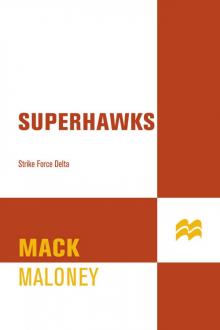 Strike Force Delta
Strike Force Delta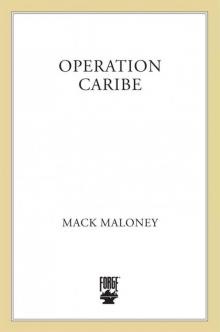 B00447820A EBOK
B00447820A EBOK Strike Force Alpha
Strike Force Alpha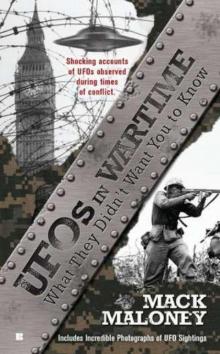 UFOs in Wartime: What They Didn't Want You To Know
UFOs in Wartime: What They Didn't Want You To Know Planet America s-2
Planet America s-2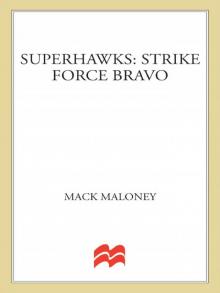 Strike Force Bravo
Strike Force Bravo The Circle War w-2
The Circle War w-2 Operation Sea Ghost ph-3
Operation Sea Ghost ph-3 Strike Force Delta s-4
Strike Force Delta s-4 The Wingman Adventures Volume One
The Wingman Adventures Volume One The Fourth Empire s-3
The Fourth Empire s-3 Battle at Zero Point s-4
Battle at Zero Point s-4 Attack on Area 51
Attack on Area 51 Chopper Ops
Chopper Ops B003IKHEWG EBOK
B003IKHEWG EBOK The Pirate Hunters ph-1
The Pirate Hunters ph-1 Chopper Ops co-1
Chopper Ops co-1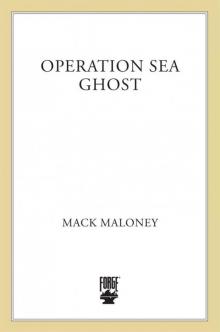 B005J4EW5G EBOK
B005J4EW5G EBOK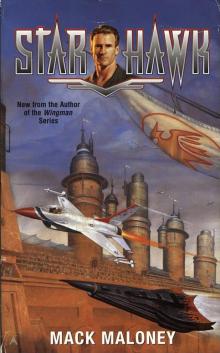 Starhawk s-1
Starhawk s-1 Storm Over Saturn s-5
Storm Over Saturn s-5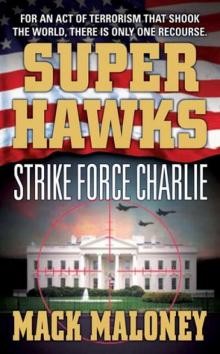 Strike Force Charlie s-3
Strike Force Charlie s-3